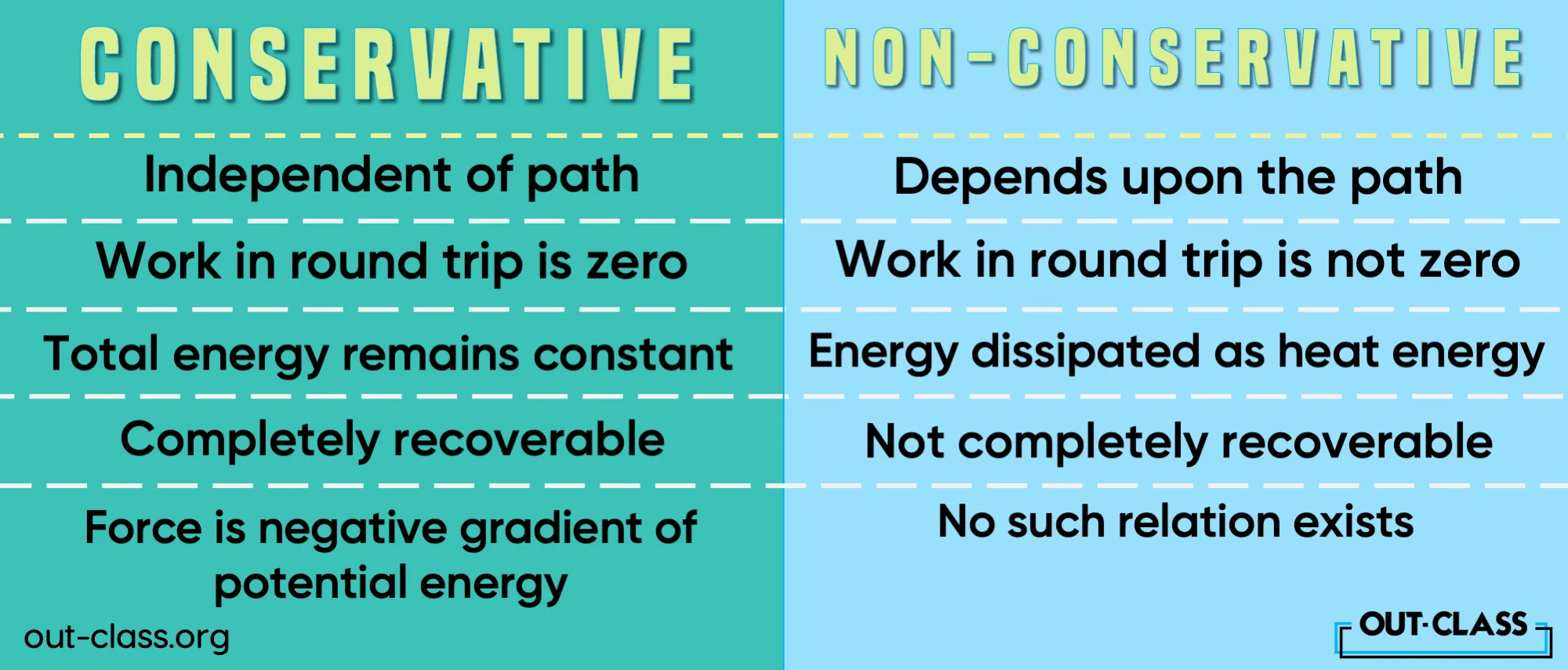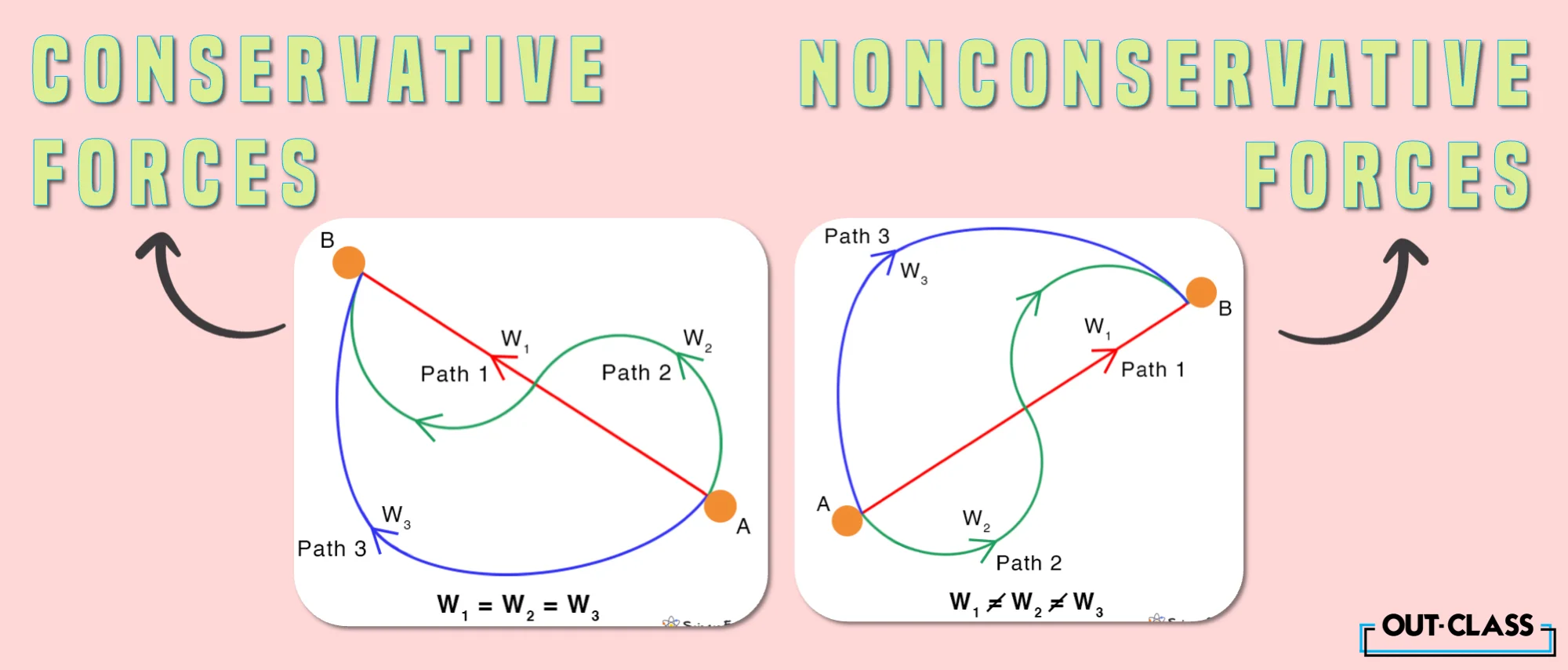The conservative and non-conservative forces often find themselves in the O Level/IGCSE Physics spotlight, and it's time to shed light on their distinctive roles.
So, what exactly sets conservative and non-conservative forces apart? This article is your compass. Let the exploration begin!
What is a Conservative Force?
A conservative force performs the work of an object in motion without taking any help from the path being taken. This is known as path independence; an object's mechanical energy or potential energy remains unchanged. Regardless of the path taken, the work carried out by a conservative force depends on only the starting and ending points.
Another vital characteristic of a conservative force is that it helps save energy. Whether the path being taken is one which helps to increase potential energy or increase kinetic energy (such as up and down a flight of stairs), the total energy of the object in motion – which is a mix of both potential and kinetic energy – remains the same.
What is a Non-Conservative Force?
A non-conservative force is the work of an object in motion that entirely depends on the path being taken. This is called being path-dependent; this means that the mechanical energy or potential energy of an object in motion is changed as a result of the type of path that has been chosen.
Another feature of nonconservative forces at work is that they cause the loss of stored energy. Nonconservative forces typically oppose the motion of an object. This results in the transformation of kinetic energy into heat or other energy forms which are ultimately lost and cannot be retrieved.
Are All Dissipative Forces Non-Conservative?
No, not all dissipative forces are known to be non-conservative, even though all non-conservative workforces result in a loss of energy. Gravity, for example, is a conservative force. However, it can also be considered dissipative if you consider the case of an object falling from a certain height. As the object falls, it loses potential energy and develops kinetic energy. But if it is caught before it hits the ground, the lost energy can be recovered and restored to its original state, thus ensuring us that gravity is indeed a conservative force.
The Difference Between Conservative and Non-Conservative Forces
According to the laws of Physics, a conservative force can be derived from a potential energy function whereas a non-conservative force cannot.
In simpler terms, this means that the work done by a conservative force to move an object only depends on the amount of potential energy present within. An example of conservative force is if an object is dropped from a certain height, the potential energy of that object will determine its movement (as it transforms into kinetic energy); it will have nothing to do with the path that has been taken.
A non-conservative force, on the other hand, performs the work of an object in a manner such that it is opposed by the path it has chosen for it. An example of non-conservative force can be the action of sliding a book across a table; the work done to move the object, (in this case, the friction which converts the potential energy of the book into heat), depends on the distance over which the book is moved as well as the roughness of the surface. The rougher the surface and the longer the distance, the greater the work done by the non-conservative force and the loss of energy.
Examples of Conservative and Non-Conservative Forces
Conservative force examples include gravity and electrostatic forces such as those between charged particles.
Examples of non-conservative forces include friction, air resistance and tension in a stretched spring. The work performed here depends on the path taken and can result in a loss of energy.
Conclusion
In summary, the difference between conservative and non-conservative forces of energy lies in their ability to conserve the potential or mechanical energy of an object as well as the level of dependence it can have on the path taken to move the object.
If you found this article interesting and wish to learn more about conservative and non-conservative forces, try the online IGCSE/O Level Physics course!
FAQs
Q. What is a conservative force?
A conservative force is a force that performs work on an object in motion without depending on the path taken. It is path-independent, and the object's mechanical or potential energy remains unchanged.
Q. What is the key characteristic of conservative forces?
Conservative forces exhibit path independence, meaning the work they do depends only on the starting and ending points. They also conserve the total energy of an object, whether potential or kinetic energy.
Q. What is a non-conservative force?
A non-conservative force is a force that performs work on an object, and its work depends on the path taken. It is path-dependent, leading to changes in the object's mechanical or potential energy.
Q. Do all dissipative forces classify as non-conservative?
No, not all dissipative forces are non-conservative. For example, gravity is a conservative force, but in certain scenarios, such as an object falling, it can be considered dissipative.
Q. What is the difference between conservative and nonconservative forces?
Conservative forces can be derived from a potential energy function, and their work depends only on the object's potential energy. Non-conservative forces are path-dependent, and their work depends on the specific path taken by the object.
Q. Can conservative forces result in energy loss?
Conservative forces do not result in energy loss; they conserve the total energy of the object. Energy loss is a characteristic of non-conservative forces, which often transform kinetic energy into other forms like heat.
Q. What are examples of conservative forces?
Examples of conservative forces include gravity and electrostatic forces, such as those between charged particles.
Q. What are examples of non-conservative forces?
Examples of non-conservative forces include friction, air resistance, and tension in a stretched spring. These forces are path-dependent and can lead to a loss of energy.





